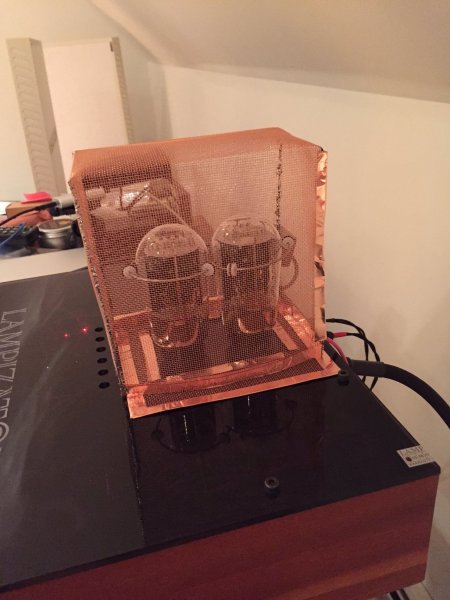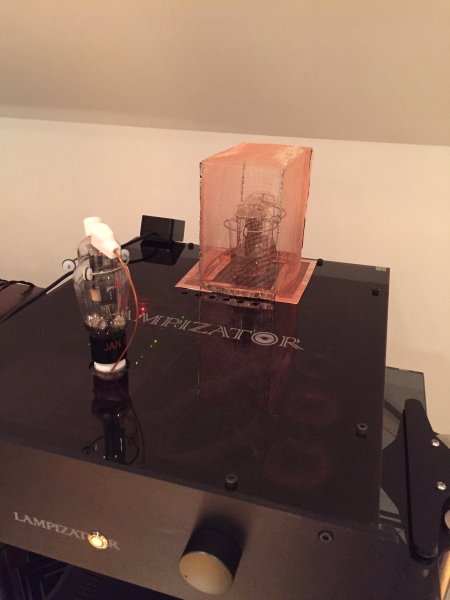Hi Norm,
Thanks for the advice. What is the input sensitivity or your amp? Mark (Sablon) has a great point. I checked my Pass XA30.8 specs and the specs indicate max output at 770mV. Obviously since my speakers are 99dB sensitive I won't be close to max most of the time, but the XA30.8 is also rated at 30W output.
My main concern is reducing the background noise level relative to the music signal.
As a side note, with regards to murphys33 report of tube shielding, I have built a faraday cage out of soldered copper mesh for my big 7 tubes, with a grounding wire to the chassis. I find the tube cages still leave the top of the tubes unshielded. This works very well to eliminate RF pickup. Images attached, not beautiful first attempt but functional.


Thanks for the advice. What is the input sensitivity or your amp? Mark (Sablon) has a great point. I checked my Pass XA30.8 specs and the specs indicate max output at 770mV. Obviously since my speakers are 99dB sensitive I won't be close to max most of the time, but the XA30.8 is also rated at 30W output.
My main concern is reducing the background noise level relative to the music signal.
As a side note, with regards to murphys33 report of tube shielding, I have built a faraday cage out of soldered copper mesh for my big 7 tubes, with a grounding wire to the chassis. I find the tube cages still leave the top of the tubes unshielded. This works very well to eliminate RF pickup. Images attached, not beautiful first attempt but functional.


Just adjust it to 550mv and you should be Golden.
My new speakers are 94db and so with the GG and 242 tubes, I get max SPL already at roughly 45% volume. On my older 90db speakers, I needed 70% volume to have the same SPL. Its a combination of several factors.










